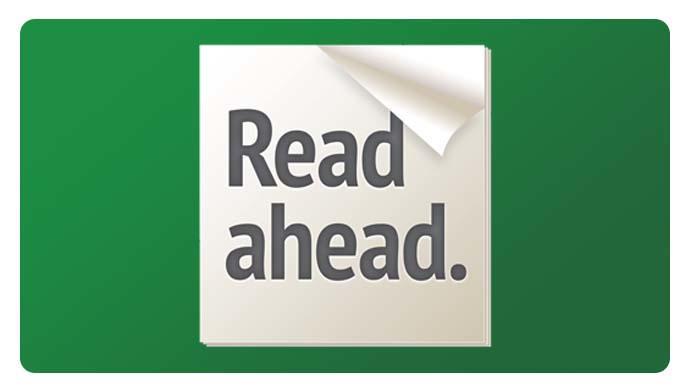
Section Branding
Header Content
Top 5 EdTech Tips: Read Ahead
Primary Content

Vacant eyes stare into space. Doodles cover pages of notebook paper. Words in the book blur as eyelids flutter closed. This level of student disengagement may mean one thing: a reading assignment has been assigned to the entire class with no individualization.
While research suggests that independent, sustained silent reading is the best method for high school level readers, the reality is that most students lack an interest in reading. Propelled by the students’ disinterest in reading, the team at Full Tilt Ahead, led by Drs. Roxanne Russell and Josh Cuevas, set out to create a solution to this problem. That is exactly what they have done with Read Ahead, an easy-to-use engaging literacy tool. Read Ahead is an EdTech tool that filters and presents reading content in a way that repeatedly directs students’ attention to the text’s main ideas.

The great news? The Full Tilt Ahead team has created a GPB Education Community group For Read Ahead! If you join this group, you will have free Reader level access forever. To join the GPB Education Community group, enter this access code when you create an account: PHYJFAHQJO.
To create a presentation, teachers enter a story or text into a text box (either by copying and pasting or typing it manually). The Read Ahead program automatically generates a wordlist of what it believes are the most important words in the story or text. The teacher can add or delete words to the wordlist. Then, simply save the presentation and receive a shareable link. When students play the presentation, the words from the wordlist flash first and then students read small digestible chunks of the text.
Read Ahead is helpful for aiding in student comprehension across grade levels and content areas. Here are 5 ways that Read Ahead can be used in any classroom:
1. Providing background knowledge
Before teaching students about a new topic, it may be necessary to give them background information. Whether students are about to read a new novel in English and need an introduction to the author or about to learn about the three main types of galaxies in science and need a better understanding of their own galaxy, Read Ahead can help students gather the necessary background knowledge to be successful.
2. Struggling readers
Read Ahead is a way of scaffolding the content for students. Because teachers choose the text and can edit the wordlist, all students will be able to read content that is accessible based on their ability and the appropriateness of the topic.
3. Vocabulary introduction
When students are asked to read text with complex vocabulary, they reach their frustration point faster. Teachers can use Read Ahead as a way of frontloading the vocabulary for students. The teacher can explain the terms on the wordlist first, and then as students read these words in the text, they will be better able to make a connection.
4. Accelerated readers
Read Ahead is a way of individualizing learning to engage even the brightest readers! Rather than giving every student the same article to read, challenge accelerated students to read texts beyond their current lexile score. Read Ahead is an easy way for teachers to provide support while students stretch to a higher level.
5. Making predictions
Before reading an article, teachers can share the text’s wordlist from Read Ahead. Once students have seen the wordlist, ask students to make predictions about the article just based on what they have seen. After students have made their predictions, allow them to continue the Read Ahead to discover if their predictions were correct.
We would love to hear your ideas for using Read Ahead in the classroom!
Vacant eyes stare into





